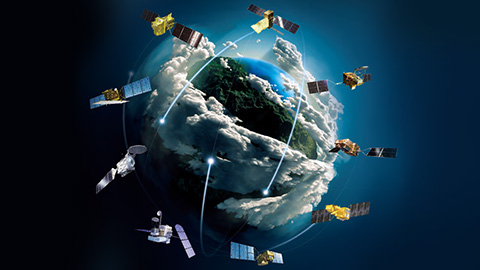What happens to satellites at the end of the life?
Each satellite has a mission term to keep on using, called “design life”. The “design life” varies depending on the type and purpose (mission) of the satellite, the orbit to launch the rocket and so on. When making a satellite, the amount of fuel, the battery size, the form of the solar cell paddle etc. are decided so that the satellite can continue to work throughout the period of “design life”. There are satellites used even beyond the design life in case it is decided that the operation of the satellite can be continued. Some satellites have lived for very long periods in the past.
Once an operation is completed, the satellite will receive instructions from the ground while it has remaining the power. It will enter the atmosphere and burn up or move from its orbit without disturbing other satellites in operation. The moving satellite spins around the Earth for a while and then it will be gradually pulled closer to the Earth by the effect of the atmosphere and gravity.
Satellites in low orbits at an altitude of a few hundred kilometers from the ground will enter the atmosphere and burn up in several years to several decades. On the other hand, satellites in high orbits over 1,000 km will continue to revolve for more than 100 years. The satellites which indefinitely stay in space without falling cause a problem of space junk (space debris) and various discussions are held on this issue around the world.










